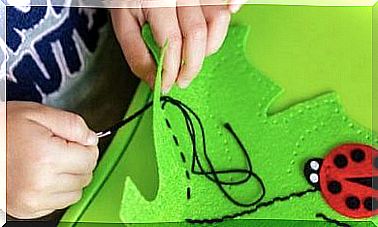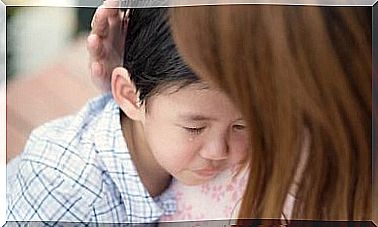What To Do If My Child Screams?

Babies are restricted in their movements and have few opportunities to express themselves. That’s why they cry to get their parents’ attention. But what to do when a bigger child screams?
What if a child still attracts attention by crying or screaming after the first few months of life? This can be very uncomfortable and annoying, so we give you a few tips on how to react correctly in this situation.
Screaming makes you nervous and often leads parents to freak out and react incorrectly. Except in emergency situations, this behavior has no positive properties.
A screaming child often frustrates his parents, and they are often ashamed when this behavior occurs in public. Friends or strangers are also surprised when they hear a child’s screams and often shake their heads.

Why do children scream
- It wants to get everything right away. If your child screams every time they want something and they get it, because you get nervous and want to calm them down, you are only reinforcing this behavior. The child believes that they have to scream to satisfy their desires. So it associates screaming with positive things.
- Negative emotions and feelings can also cause a child to cry. It cannot yet identify its feelings and even less manage them. This is also often difficult for us adults, so you cannot expect your child to always behave perfectly. Often times, when they are feeling bad, nervous, frustrated, or sad, they cannot put it into words and expresses their worries by screaming to get your attention.
- Did your child learn to cry at home? In some cases, the parents, grandparents, or carers make it a habit of yelling at the child for control. If this happens frequently, then it gets used to it and mimics this behavior. It will try to resolve its conflicts by shouting as well.
- The defiant phase is a normal phase of development that begins at the age of two to three years. The offspring are becoming more and more independent, discovering their surroundings and already feeling quite independent. When their freedom is restricted, they become defiant and stubborn, which they often show by screaming.
You now know the most common causes of a child crying. Of course, there are other possible triggers that can be traced back to health or psychological causes, for example.
In this case you have to see a specialist. But let’s look at what to do when a child cries for the normal reasons described above.

What to do if my child screams
- Set a good example! Don’t scream either, even if it’s difficult for you. Keep your calm and don’t raise your voice. This can help your child learn that there are other ways to resolve conflicts. If they see that a conversation and the explanation of the reasons are sufficient, they will imitate you. Of course, factors such as tiredness, stress, everyday hectic, physical discomfort or worries also play a role. Still, you shouldn’t get nervous and react calmly. Control your emotions and try to properly manage stress to prevent yelling at your children.
- Don’t give in if your child tries to blackmail you. Calmly explain to him that screaming doesn’t give him what he wants. Do not grant his wishes as long as your child is crying!
- Explain to your little darling that screaming is not good. Give him examples of people screaming and explain how uncomfortable it is.
- Help your child identify and properly manage emotions and feelings. It has to learn that it is normal to feel bad at times. Show him possible solutions so that he can overcome negative feelings.
- Congratulate your child when they politely ask you for something instead of yelling. It knows that it can be done without screaming and will make an effort in the future. You also increase his self-confidence and self-esteem.
There are a variety of methods that you can use. For example, put your child’s finger over their mouth to stop them crying and thinking. It is important to react lovingly and sensitively.
You want your child to understand logically that screaming does not work and that it is not positive. As with any learning process, you need a lot of patience here too!









